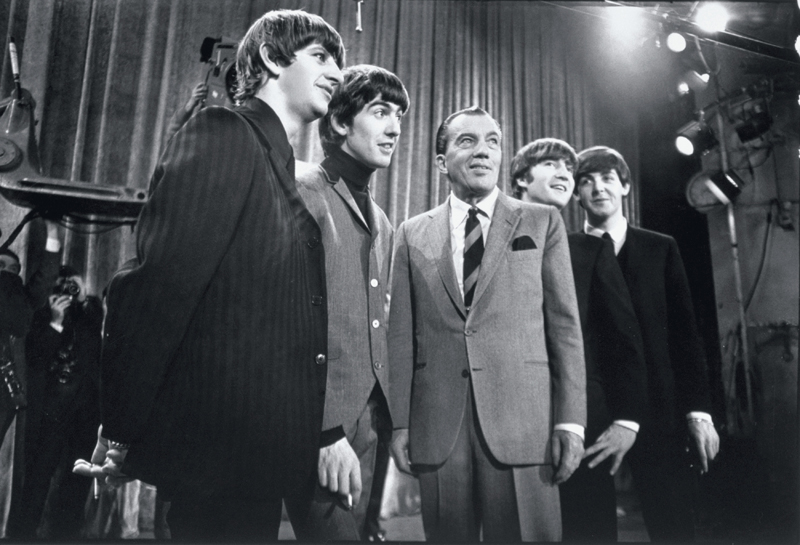The Making of The Beatles’ U.S. Albums

As the Beatles’ camp gets ready to roll out The U.S. Albums box set next month, we thought it was a good time to explore why this new release even exists.
Didn’t Apple Corps reissue remastered versions of the group’s catalog just a few years ago?
Well, yes. But the 13-CD box, due January 21, includes five albums that have never been officially available on CD. And, as it happens, the Beatles’ U.S. catalog is another animal altogether, thanks to the handiwork of Capitol Records, which licensed the British group’s music in the states.
First, there are the titles and cover art, which almost always differed from the U.K.’s Parlophone Records releases, right through the end of 1965.
Second are the track listings. The Capitol albums typically contained 11 or 12 tracks to the 14 on the Parlophone LPs. Each of the U.S. releases was compiled using tracks from at least two U.K. albums and included songs that were also released as singles, a practice frowned upon by the Brits.
Finally, and most significantly, there is the sound. The American albums released from 1964’s Meet the Beatles! through 1965’sRubber Soul were usually brighter sounding and had more reverb than their British counterparts. In addition, the stereo mixes on several songs were produced artificially, as no true stereo mixes had been created yet by the Beatles production team.
Which raises the question: Who on earth would mess with the Beatles’ music?
All the latest guitar news, interviews, lessons, reviews, deals and more, direct to your inbox!
Answer: A Capitol Records executive by the name of Dave Dexter Jr.
When Capitol began issuing the group’s records in the states at the end of 1963, Dexter was given the task of overseeing the catalog. And he had some catching up to do: the Beatles had already released four singles and a full-length album in the U.K.
The easiest—and most profitable—approach was to release albums with fewer tracks than the British versions. In this way, Capitol released eight Beatles albums in 1964 and 1965 to Parlophone’s four.
But Dexter wasn’t happy with the sound of the Beatles’ records. He thought they sounded thin and dull compared to what was on the teen hit parade.
His solution was to boost the high end and, in many instances, add reverb to make the songs sound more cavernous and dramatic. The reverb was especially useful on tracks that were electronically processed for stereo: the wash of ambience helped fill the midfield between the left and right channels.
If you think that tampering with the Beatles’ music is akin to desecration, you’re not alone. For years, hardcore Beatle fans have railed against Dexter and Capitol’s tinkering, preferring the British releases for their purer sound and stronger track listings.
But in at least one instance Dexter did a service to the Beatles’ music. As the folk-rock boom took off in 1965, he got the idea to peel away a few electric-guitar-driven tracks from the British Rubber Soul and add a couple of acoustic-guitar-heavy songs from the group’s previous album, Help!, namely “I’ve Just Seen a Face” and “It’s Only Love.”
The result is a moody masterpiece. Dexter’s decision to open the album with the sullen but fast-paced “I’ve Just Seen a Face” gets things off to a lively start and establishes the somber, reflective mood that continues over many other songs on the album.
Dexter also gave Beatles fans a treat by including, unintentionally, Paul McCartney’s false starts on the Rubber Soul track “I’m Looking Through You.” McCartney attempted the opening riff twice in succession before performing it successfully. Omitted from the British release, McCartney’s flub is a charming revelation that guitarists everywhere can relate to.
Below, we’ve provided a few examples of how Dexter’s versions differed from the Beatles’ British releases.
Note the heavy reverb on the U.S. stereo versions of “She’s a Woman” and “I Feel Fine,” from Beatles ‘65:
- Compare them to the much-drier UK stereo versions:
Notice the different stereo separation on Dexter’s version of “You Won’t See Me” …
…and the group’s British version:
And here is the false start on “I’m Looking Through You”:
Notice, also, the difference in stereo separation on the singing here and in the U.K. version, where McCartney’s double-tracked vocals are separated in the stereo field:








Christopher Scapelliti is editor-in-chief of Guitar Player magazine, the world’s longest-running guitar magazine, founded in 1967. In his extensive career, he has authored in-depth interviews with such guitarists as Pete Townshend, Slash, Billy Corgan, Jack White, Elvis Costello and Todd Rundgren, and audio professionals including Beatles engineers Geoff Emerick and Ken Scott. He is the co-author of Guitar Aficionado: The Collections: The Most Famous, Rare, and Valuable Guitars in the World, a founding editor of Guitar Aficionado magazine, and a former editor with Guitar World, Guitar for the Practicing Musician and Maximum Guitar. Apart from guitars, he maintains a collection of more than 30 vintage analog synthesizers.

